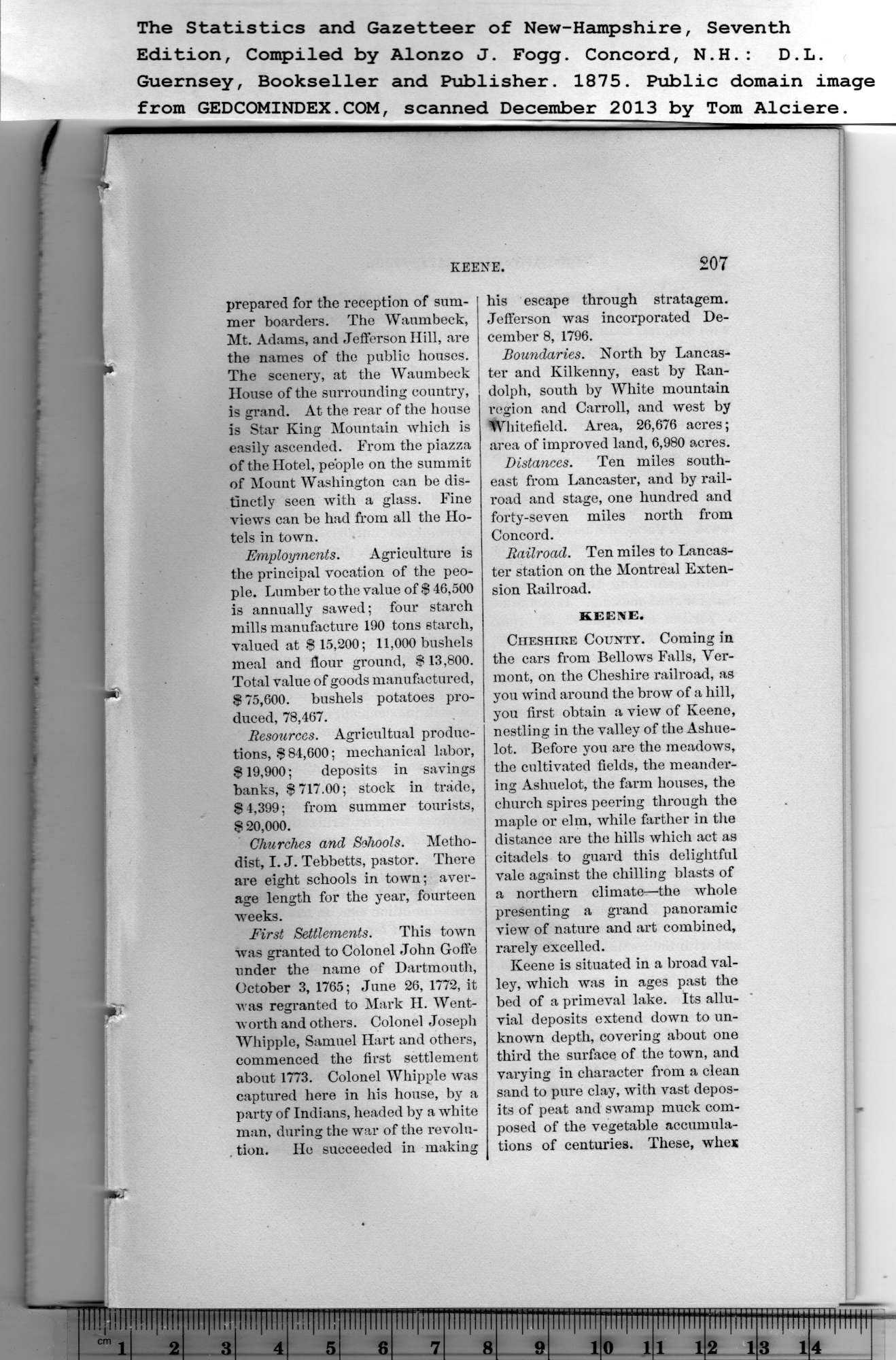|
prepared for the reception of sum-
mer boarders. The Waumbeck,
Mt. Adams, and Jefferson Hill, are
the names of the public houses.
The scenery, at the Waumbeck
House of the surrounding country,
is grand. At the rear of the house
is Star King Mountain which is
easily ascended. From the piazza
of the Hotel, people on the summit
of Mount Washington can be dis-
tinctly seen with a glass. Fine
views can be had from all the Ho-
tels in town.
Employments. Agriculture is
the principal vocation of the peo-
ple. Lumber to the value of $ 46,500
is annually sawed; four starch
mills manufacture 190 tons starch,
valued at $ 15,200; 11,000 bushels
meal and flour ground, $13,800.
Total value of goods manufactured,
$ 75,600. bushels potatoes pro-
duced, 78,467.
Resources. Agricultual produc-
tions, $84,600; mechanical labor,
$ 19,900; deposits in savings
hanks, $ 717.00; stock in trade,
$4,399; from summer tourists,
$ 20,000.
Churches and Sohools. Metho-
dist, I. J. Tebbetts, pastor. There
are eight schools in town; aver-
age length for the year, fourteen
weeks.
First Settlements. This town
was granted to Colonel John Goffe
under the name of Dartmouth,
October 3, 1765; June 26, 1772, it
was regranted to Mark II. Went-
worth and others. Colonel Joseph
Whipple, Samuel Hart and othei's,
commenced the first settlement
about 1773. Colonel Whipple was
captured here in his house, by a
party of Indians, headed by a white
man, during the war of the revolu-
tion. He succeeded in making
his escape through stratagem.
Jefferson was incorporated De-
cember 8, 1796. |
Boundaries. North by Lancas-
ter and Kilkenny, east by Ran-
dolph, south by White mountain
region and Carroll, and west by
Whitefield. Area, 26,676 acres;
area of improved land, 6,980 acres.
Distances. Ten miles south-
east from Lancaster, and by rail-
road and stage, one hundred and
forty-seven miles north from
Concord.
Railroad. Ten miles to Lancas-
ter station on the Montreal Exten-
sion Railroad.
KEENE.
Cheshire County. Coming in
the cars from Bellows Falls, Ver-
mont, on the Cheshire railroad, as
you wind around the brow of a hill,
you first obtain a view of Keene,
nestling in the valley of the Ashue-
lot. Before you are the meadows,
the cultivated fields, the meander-
ing Ashuelot, the farm houses, the
church spires peering through the
maple or elm, while farther in the
distance are the hills which act as
citadels to guard this delightful
vale against the chilling blasts of
a northern climate—the whole
presenting a grand panoramic
view of nature and art combined,
rarely excelled.
Keene is situated in a broad val-
ley, which was in ages past the
bed of a primeval lake. Its allu-
vial deposits extend down to un-
known depth, covering about one
third the surface of the town, and
varying in character from a clean
sand to pure clay, with vast depos-
its of peat and swamp muck com-
posed of the vegetable accumula-
tions of centuries. These, whex |
